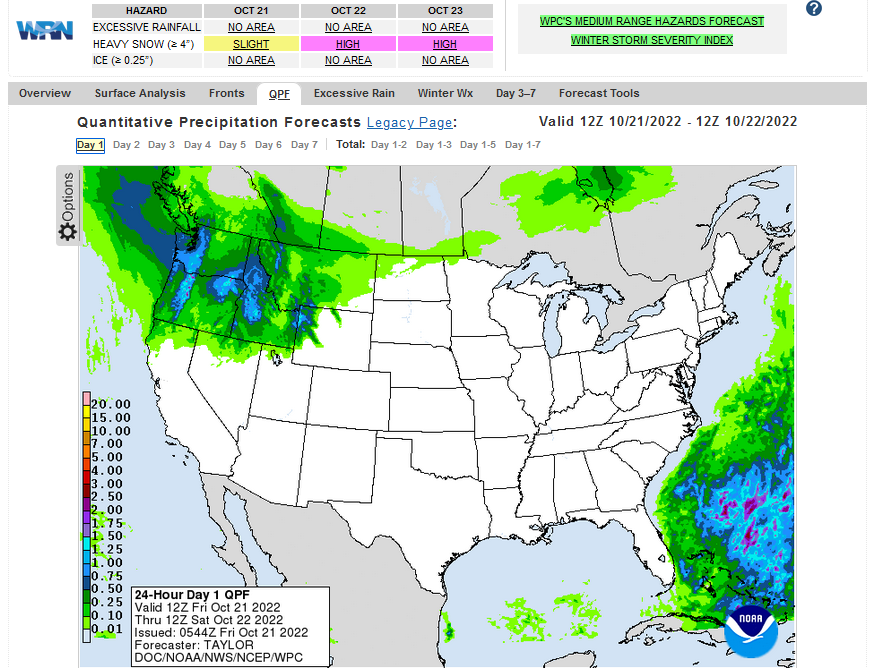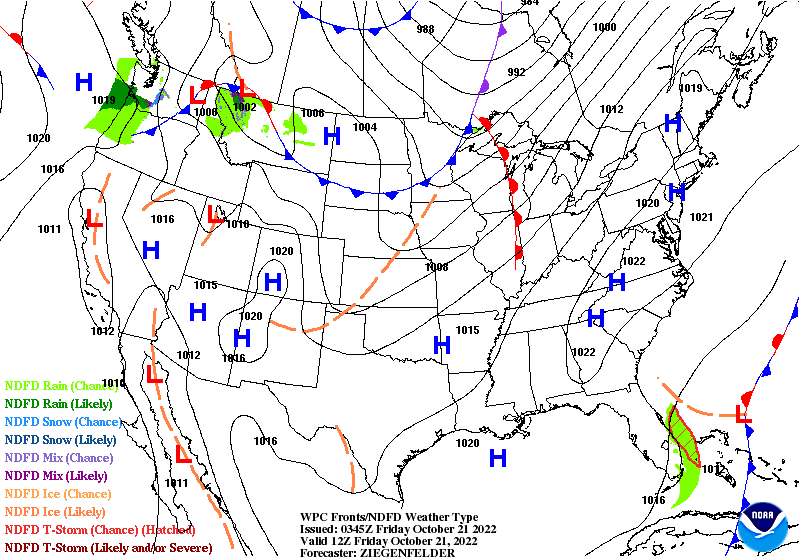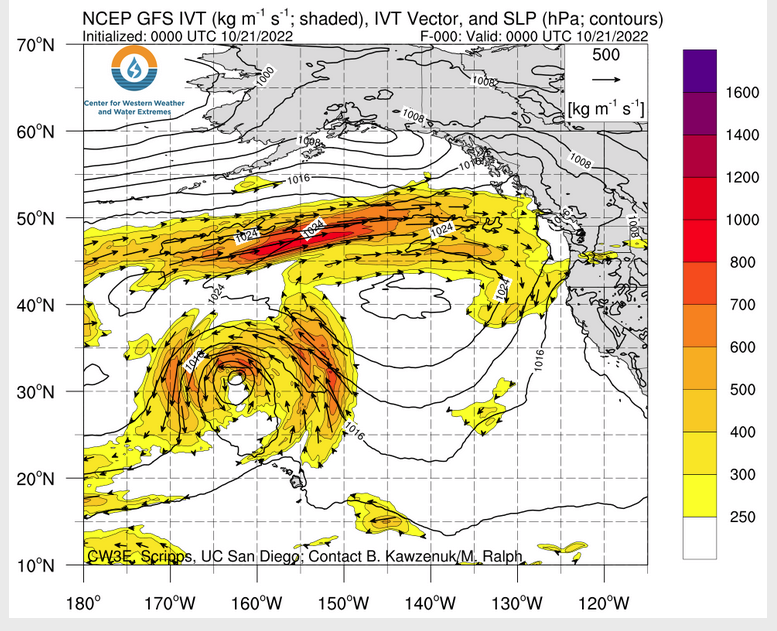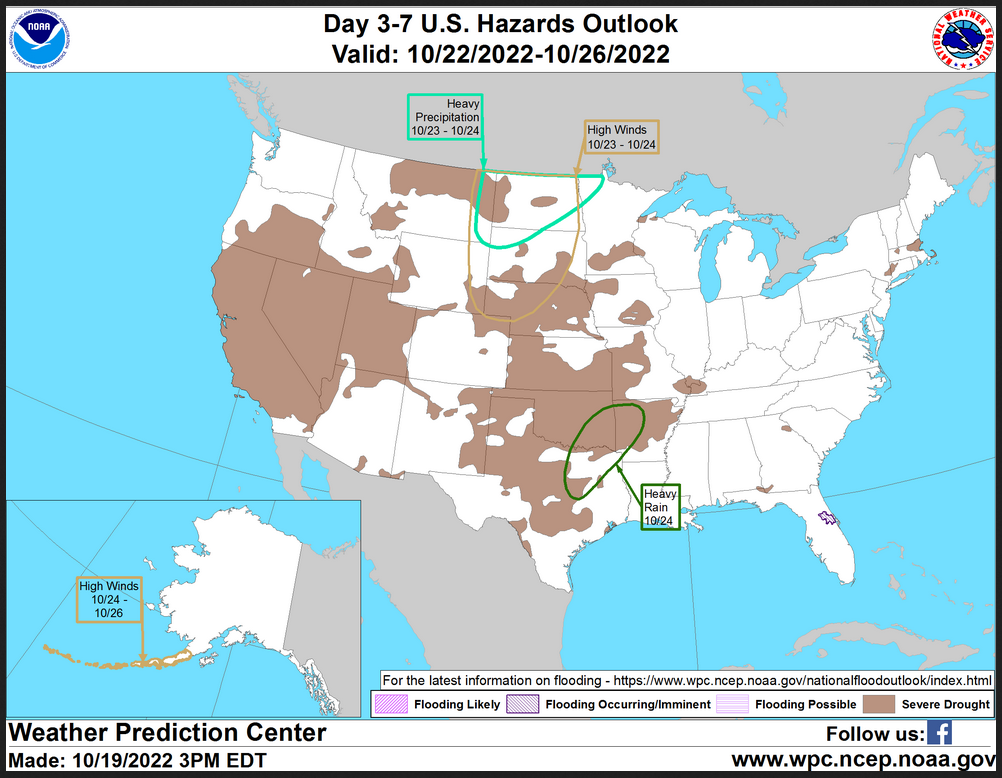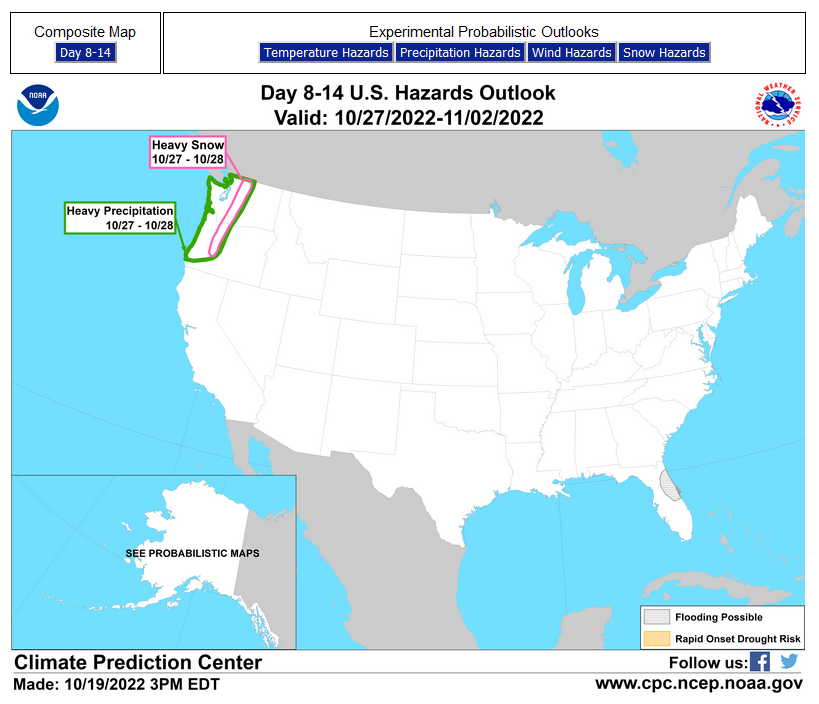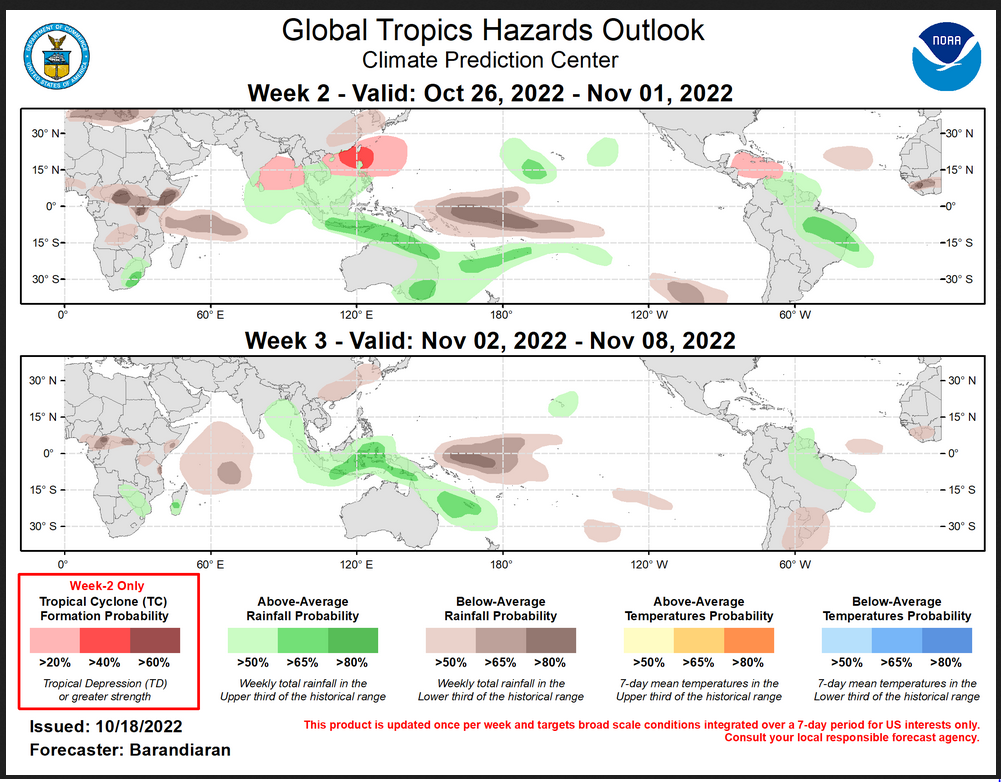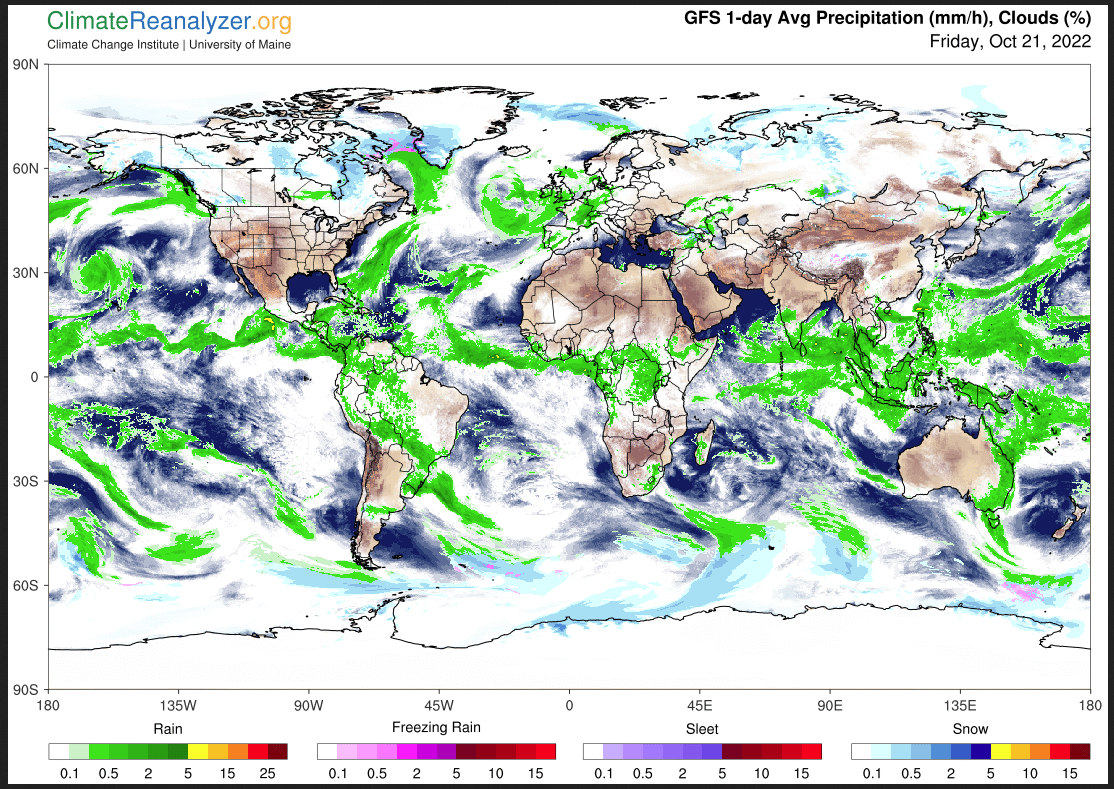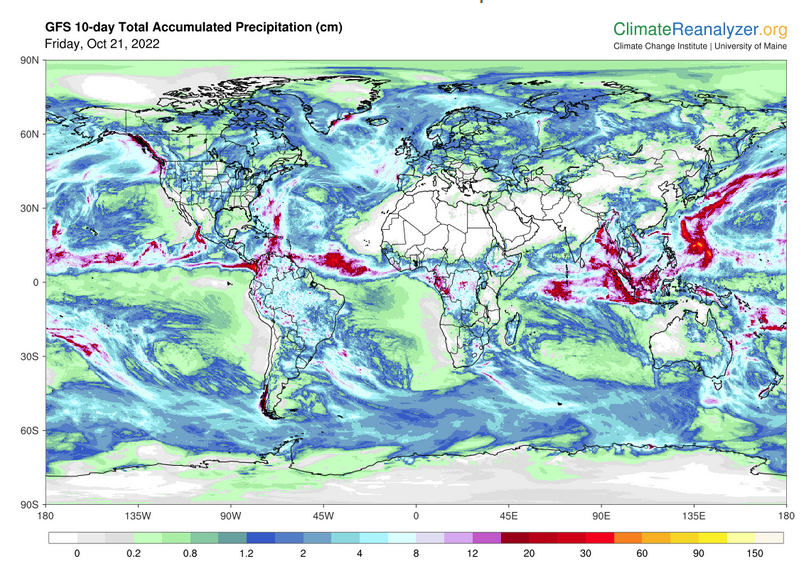Here is what we are paying attention to this morning and the next 48 hours from this morning’s NWS Forecast.
...Above normal warmth in the Central U.S. through this weekend... ...Critical Fire Weather conditions for Montana and Wyoming... ...Increasing precipitation chances and decreasing temperatures in the West this weekend...
Continuation of the NWS Short Range Forecast (It is updated twice a day and these updates can be found here.
After the cold snap earlier this week, temperatures have been warming back up in the Central and Eastern U.S. Above normal temperatures are forecast for the Central U.S. through this weekend. High temperatures could reach as high as 20-25 degrees above normal into the upper 70s and lower 80s in parts of the Midwest. The Eastern U.S. will also feel the warming trend with highs gradually returning to near to slightly above normal by Sunday. Chilly overnight low temperatures are expected tonight and Friday night across the Southeast and east of the Appalachians; however, lows will not be as cold as they have been the past couple nights. Frost Advisories will be in effect tonight for portions of the Mid-Atlantic from Northern Virginia to New Jersey. Most of the continental U.S. has entered a brief period of dry weather with little to no precipitation. Precipitation is expected to return on Friday to the Pacific Northwest as a low pressure system begins to move southeast across the region. Gusty winds and dry weather ahead of this system will contribute to increased fire danger for portions of the Plains, Great Basin, and Ohio River Valley. Fire Weather Watches and Red Flag Warnings are in effect for portions of these regions. The Storm Prediction Center has highlighted an area on Critical Fire Weather conditions in Central and Eastern Montana today and Southern Wyoming Friday where rapid fire spread will be possible. Those affected should listen to local officials for fire safety information. Precipitation chances will increase while temperatures decrease this weekend across the Western U.S. as the low pressure system pushes a cold front southeast. Precipitation chances will begin on Friday for the far Pacific Northwest, then expand across the Northwest and northern Rockies on Saturday, and push into the Intermountain West and Plains on Sunday. Precipitation should help to decrease fire danger in some areas. Rain is expected at low and mid elevations, and mixed precipitation is expected at higher elevations. Heavy mountain snow will also be possible. Below normal temperatures are expected in the western U.S. behind the cold front. High temperatures will drop nearly 30 degrees from the 70s and 80s today to the 40s and 50s on Sunday.
Current forecast of heavy precipitation (Updates can be found HERE)
Maps that relate the forecast to geography can be found by clicking Here for Day 1 and Here for Day 2.
Here is a 60-hour animated forecast map that shows how the short-term forecast is expected to play out
If it needs to be updated click here.
ATMOSPHERIC RIVERS
Click HERE to update. HERE is some useful information about Atmospheric Rivers.
HAZARDS OUTLOOKS
Click here for the latest complete Day 3 -7 Hazards forecast which updates only on weekdays. Once a week probably Monday or Tuesday I will update the images. I provided the link for readers to get daily updates on weekdays. Use your own judgment to decide if you need to update these images.
Worldwide Tropical Forecast
(This graphic updates on Tuesdays) If it has not been updated, you can get the update by clicking here This is a new approach and covers weeks 2 and 3 not weeks 1 and 2. It has more information but I am having trouble getting used to it. As usual, it comes with a discussion which is below
Detailed Maps and Reports for the Western Atlantic and the Pacific Oceans
Below are four maps that summarize the situation for the Atlantic, Eastern, Central Pacific, and Western Pacific. Additional information can be accessed by clicking HERE
First the Atlantic
Click to view the forecast map and have access to additional information https://www.nhc .noaa.gov/gtwo.php?basin= atlc&fdays=5
Then Eastern Pacific
Click to view the forecast map and have access to additional information https://www.nhc.noaa.gov/gtwo.php?basin=epac&fdays=5
Then Central Pacific
Click to view the forecast map and have access to additional information https://www.nhc.noaa.gov/gtwo.php?basin=cpac&fdays=5
And the Western Pacific
Click to view the forecast map and have access to additional information https://www.metoc.navy.mil/jtwc/jtwc.html
Some Intermediate-Term Outlooks
Links to “Outlook” maps and discussions for three time periods. Days 6 – 10, Days 8 – 14, and Weeks 3 and 4. An outlook differs from a forecast based on how NOAA uses these terms in that an “outlook” presents information from deviation from normal and the likelihood of these deviations.
You have to click on the links because they do not update automatically and I do not want to have stale images in the article. But it is not difficult to click on a link and you get a large image plus a discussion. On Fridays in a separate article, we will show the images and provide a link in this article that article. But remember what you will see is the images as of Friday. But here you can get the current images simply by clicking on them. Then hit the return arrow at the upper left of your screen to return to the article. You will not find this information easily anywhere else.
Right now you can find these maps here (We show them every Friday there but you can click above and find them).
Worldwide Weather
Below is the current or short-term precipitation forecast which can be updated by clicking HERE Additional maps can be obtained H ERE.
Month to Date Information
Month to date Temperature can be found at https://hprcc.unl.edu/products/maps/acis/MonthTDeptUS.png
Month to date Precipitation can be found at https://hprcc.unl.edu/products/maps/acis/MonthPNormUS.png

